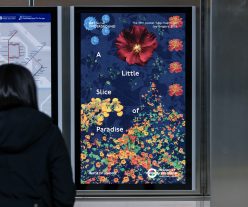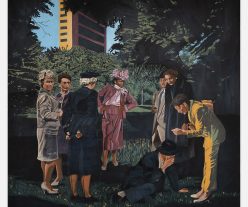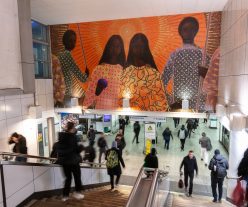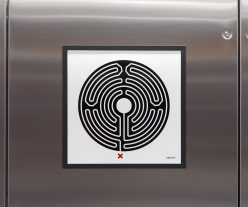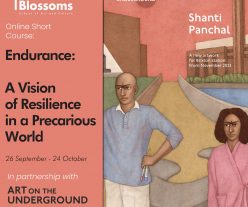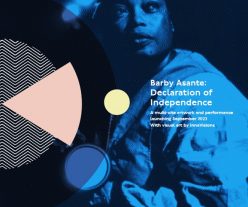
A Taste of Home
A new artwork titled A Taste of Home by leading artist and photographer Joy Gregory for Heathrow Terminal 4 Underground station is now on view.
Renowned for her influence on British feminist photography and social justice movements since the 1980s, Joy Gregory uses photographic media to re-illuminate overlooked narratives around identity, race, gender and social history which underscore contemporary society.
A Taste of Home expands on Gregory’s interest in themes of migration, memory and plant knowledge. Recognising Heathrow as a gateway to London, a portal of entry and exit as people pass in and out of the city, Gregory has rooted this commission in dialogue with the community of refugees and asylum seekers currently living in temporary accommodation near the airport, many of whom are supported by the Hillingdon-based charity, Refugees in Effective and Active Partnership (REAP).
The artwork offers a space for the stories of newly arrived Londoners, displaced people whose realities are increasingly maligned and misrepresented, and explores how we carry a sense of home with us in the plants and food we cook, share and remember.
The artwork is installed on a series of twenty-four billboards in the Piccadilly line ticket hall rotunda of Heathrow Terminal 4 station and brings together excerpts of a poem from the Poetry Translation Centre by Khaled Abdallah, ‘Seeds in Flight’, and Warsan Shire’s poem ‘Home’. These poetic fragments sit alongside ingredients which were discussed as ‘tastes of home’ during a series of photographic workshops Gregory facilitated in the temporary accommodation, collaged over botanical artworks Gregory created using techniques such as cyanotype and monotype printing.
The twenty-four artworks expand on the photographic collage technique used for Gregory’s 2023 pocket Tube map artwork A Little Slice of Paradise, which was inspired by TfL’s history of staff cultivated station gardens. Rooted in solidarity, A Taste of Home mediates on the ways that compassion and food connects us, across oceans and beyond borders, and celebrates the cultures, languages and hopes which coalesce in London.
Joy Gregory, artist, said: “I have long been fascinated by the journeys of food and plants, how they traverse continents and cultures, weaving stories of migration and resilience. Plants are central to our being, they sustain our bodies, heart, and soul. They embody the essence of human migration, reflecting our innate desire for new beginnings—sometimes chosen, but all too often, imposed by circumstances beyond our control. In the words of the poet, Warsan Shire, ‘No one leaves home unless home is the mouth of a shark’. This poignant line encapsulates the harsh realities faced by those forced to flee their homes in search of safety and refuge. A Taste of Home is a project that honours the richness of diverse cultures and the shared humanity that binds us all.”
A Taste of Home includes excerpts from two poems:
‘Home’ by Warsan Shire, from the collection ‘Bless The Daughter Raised By A Voice In Her Head’
‘Seeds in Flight’ by Khaled Abdallah, translated from Arabic by Sara Vaghefian with participants at a Poetry Translation Centre translation workshop.
The Poetry Translation Centre, founded by the poet Sarah Maguire in 2004, champions poetry from Asia, Africa, the Middle East and Latin America in English translation, working with diaspora communities for whom poetry is of great importance.
Thanks to Reed, the family-run recruitment and business services company and current annual sponsor for the Art on the Underground programme.



